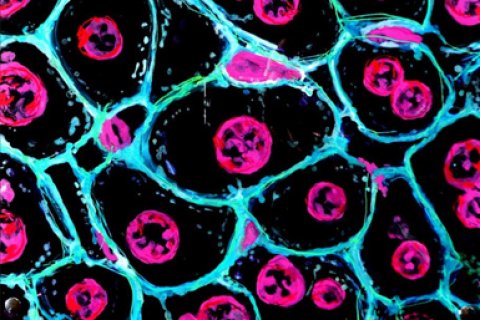Mechanism of Tumor Suppression
Understanding mechanisms that prevent cancer will create novel therapies against cancer

Tumor suppressor genes: Novel targets to suppress cancer
Our research is centered on exploring the function of tumor suppressor genes utilising single cell genomics and genetic animal models. We have developed unique models to study the function of the Retinoblastoma/E2F signaling pathway, which is altered in almost every type of cancer in animals and humans. A major obstacle in creating novel anticancer drugs is that many tumor suppressor genes are mutated and therefore cannot be reactivated to block cancer. However we discovered novel tumor suppressor genes, the atypical E2Fs, that are very rarely mutated in cancer and therefore represent a novel and promising therapeutic target that can be activated in cancer cells to inhibit cell divisions. To develop novel strategies it is essential to understand how these tumor suppressor genes function and how they are regulated. This knowledge will allow us to develop novel therapy strategies by hyper-activating these tumor suppressor genes in cancer cells.

Tumor suppression through whole genome duplication
The addition of one or more complete sets of chromosomes, also called polyploidy, is one of the most dramatic changes known to occur in the genome. Polyploidy is a prominent feature of cancer, but it is unknown whether this phenomenon contributes to cancer formation. Since polyploid cells have multiple copies of genes, we hypothesise that polyploid cells are better protected against cancer inducing mutations. We are developing novel approaches to determine whether polyploidy in the liver has a tumor suppressor function. Functional insights concerning the impact of polyploidy on cancer formation will lead to development of novel therapeutic strategies.

